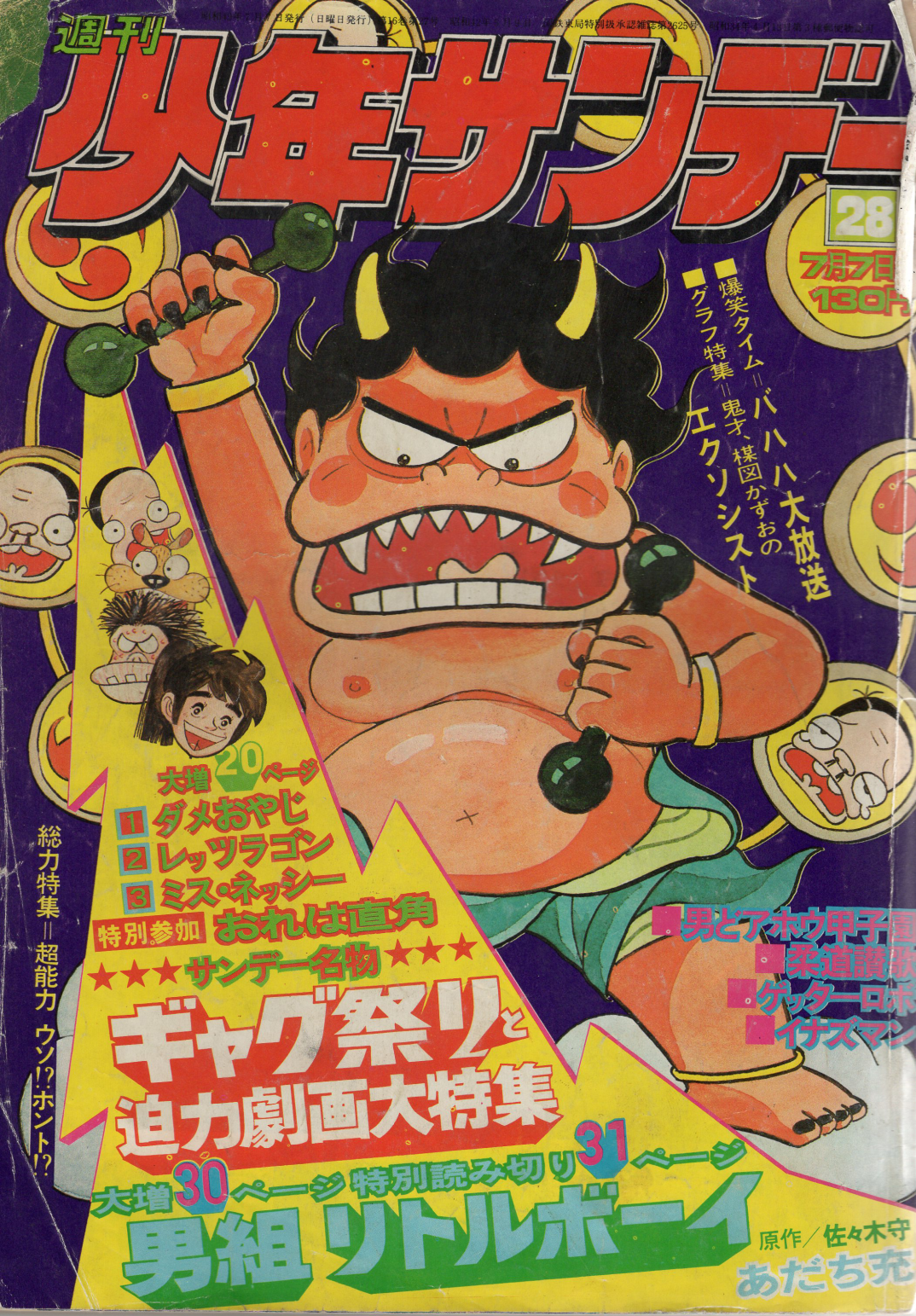Recently I discovered a special comic that filled my horror-loving heart with joy. Not only is it something that I would call a rare find and become a mini-translation project for myself, but it blends some of my favorite interests together. If you’re a fellow fan of these, I hope that it brings you the same kind of joy after finishing this post.
I’ve loosely written about one of my favorite films before, The Exorcist, as well as my favorite Japanese horror comic writer, Kazuo Umezu. Little did I know that these two things have come together at some point in the past. After digging through many malls and shops across Tokyo with overwhelmingly large quantities of devil-knows-how-old magazines and books, I found a 1974 issue of Shonen Sunday. If you’re bizarrely skilled at quickly piecing things together you have probably realized that The Exorcist was just released the previous year, in 1973. In Japan, however, the film wasn’t released until 1974 which isn’t at all unordinary (especially since the U.S. saw the film’s release on December 26th)
To commemorate The Exorcist‘s release in Japan, then-to-be legend Kazuo Umezu was asked to create a full color spread in the July 7th issue of Shonen Sunday. At the time, Umezu was 38 years old and had a few of his most famous works of his career already behind him. These included 猫目小僧 (Nekome Kouzo, Cat Eyed Boy), おろち (Orochi, Orochi: Blood) and 漂流教室 (Hyouryuu Kyoushitsu, The Drifting Classroom) It was a natural choice to choose the already established horror master to take on this piece in honor of the film that was taking the world by pea soup slinging storm.
What is even more fascinating is the impact The Exorcist had made in cinema when it was released. It’s quite telling that after just a few months, other countries were thinking of ways to promote and commemorate its release.
While I found little information about The Exorcist by Kazuo Umezu on the internet, I didn’t find any translation of it. I was happy to take on this task and translate it all even if you could probably assume what was going on panel by panel as they depict the most famous scenes from the film.

This brilliantly done close-up of possessed Regan doubled as both the first page of the spread as well as an alternate cover for the magazine. On the top left in green font, the cover reads as follows:
“In a beautiful girl’s body, a demon took over! The horror film that’s a hot topic in the world right now, The Exorcist, impacting with a full color spread!”
At the bottom, the panels read from right to left:
“This twelve year old girl named Regan spent everyday happily together with her mother.”
“Regan’s mother saw her playing on the occult (Ouija) board.”
“Suddenly, the board (planchette) moved on it’s own! However, this went unnoticed.”

“One night…Regan’s mother heard an unsettling breathing sound coming from upstairs. But, there was no one around.”
“Regan was sleeping soundly.”
“However, an incredibly strong and cold wind poured in through an open window which left Regan’s mother with an ominous feeling.”
“A few days later, a loud scream was heard coming from Regan’s room!”

“Regan’s bed rocked tremendously and she was being shaken back and forth.”
“The force of the bed was so strong Regan’s mother could do nothing to stop it.”
“Regan was being hurt by an unseen force and her appearance changed miserably.”
“Stop it!”

“Regan was seen by a doctor, but he could not find any abnormalities.”
“Inexplicably, Regan’s face and voice had changed — she sounded like a man and she shouted vulgar obscenities.”
“She no longer seemed like a young girl and because of her viscous actions there was no choice but to tie her to the bed.”

Geeetssch!
“The Devil was inside Regan!”

“She became a demon. From her mouth, Regan spat foul liquids onto others in the room.”
“The furniture came to life and began attacking everyone.”
“Her head twisted around revealing a mocking expression!”
“However, letters appeared on Regan’s stomach that spelled out ‘Help me!'”
“From within her body which was now taken over by the devil, Regan was asking for help!”

“The decision was made , an exorcism was necessary in order to drive out the devil!”
“The devil jolted out and groaned in pain. It was then when Regan’s body began to float up in the air. Even for the devil, this was the last of its power.”

“The devil finally lost. Due to the exorcist’s prayer, it revealed its identity — and this false Regan once again returned to the cute, ordinary girl that she was before.”
“But the exorcist had died. The exorcist’s assistant as well had suffered a mysterious death.”
“In the end, was the devil really destroyed? Perhaps, but you may also have a demon beside you…”
Well, that’s all he wrote! Hope you enjoyed the artwork. I consider this a treasure for a fan like me. If you’re a collector, it might be available online somewhere. I would suggest Yahoo! Auctions or other Japanese re-seller websites.
As a bonus, this was the actual cover for the magazine which was immediately before the close-up shot of Regan above.



















